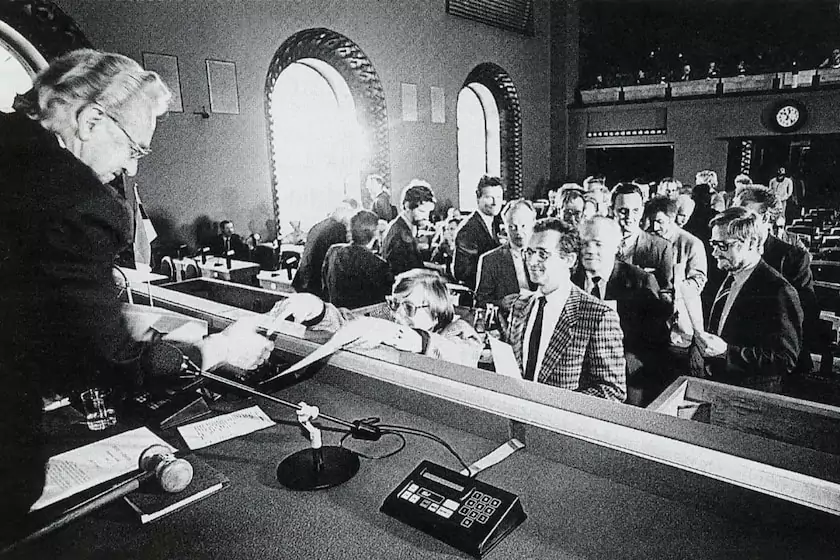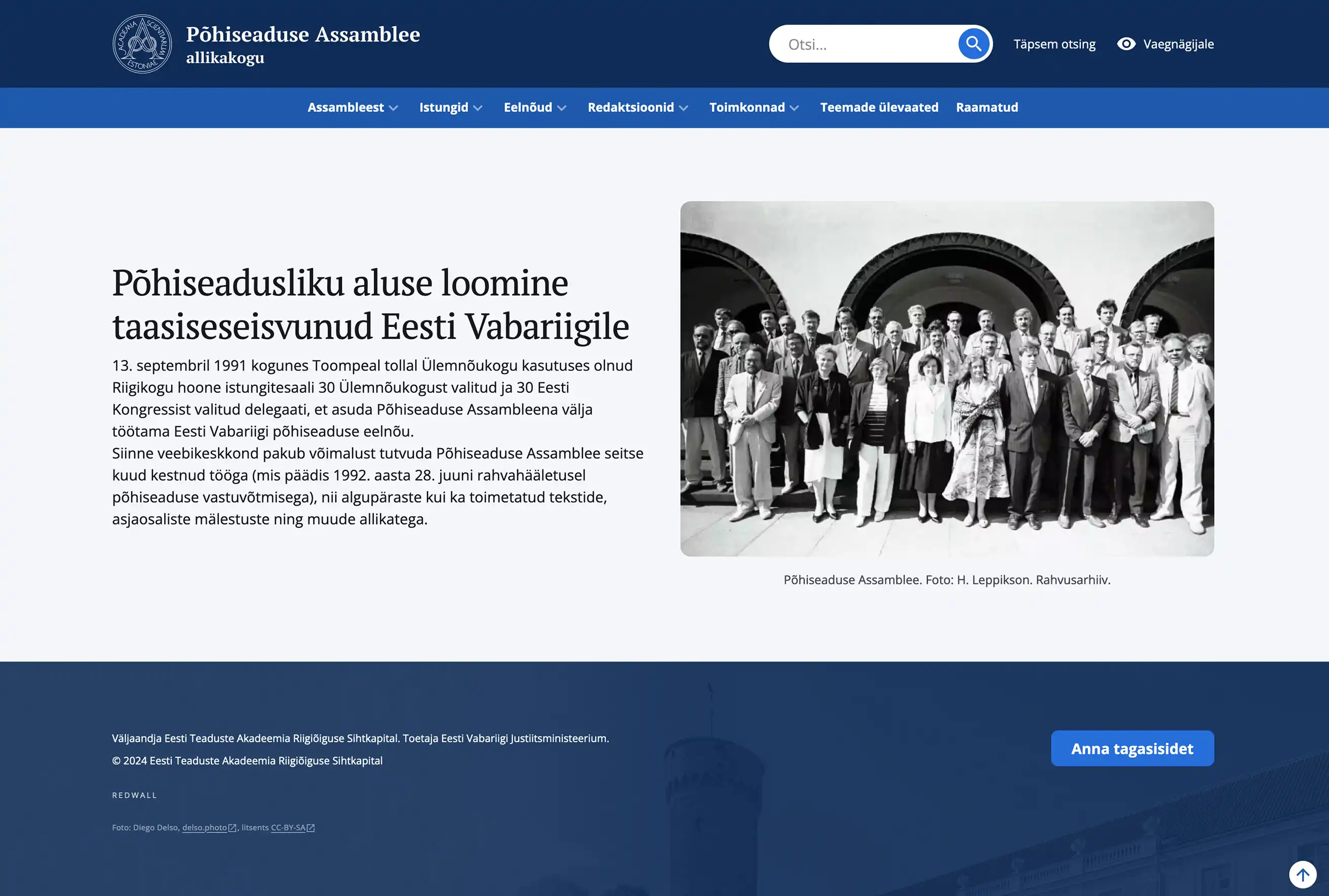A working group supported by the Estonian Academy of Sciences’ Foundation for Constitutional Law and the Ministry of Justice approached us to collaboratively create a web platform dedicated to the Estonian Constitution and its origin story.

Project
Constitutional Assembly source collection
A web platform for exploring the work of the assembly that drafted Estonia’s Constitution — featuring original and edited texts, participant recollections, and other sources.

However, this is not a website aimed at a wider audience. At its core, it is an archive of textual sources, with the main goal being to make previously static collections interactive for researchers—searchable and comparable. The aim was to provide historians and legal scholars with a modern digital tool to help them navigate extensive source material more quickly and conveniently. True, in the future, the site may also feature recollections from participants and expert commentary, but it’s clear that it will not attract a broad readership.
The client had already done much of the conceptual thinking. There was a fairly clear understanding of what users should be able to do—what to compare, what not to, where to show additional information, what connections between document types are needed, etc.
Our task was to make sense of all that and turn it into a usable design and functioning site. This required us to step out of the mindset of a typical corporate or promotional website and into the shoes of a researcher working with texts. Since the platform is text-focused, we implemented a variety of tools for working with text: users can compare two documents side by side, search within the content, create and copy citations, explore connections and sources, and more.
Silver Sikk (UX/UI), Richard Aljaste (development), Marili Uuetoa (testing), Kristel Orusalu (project management)

